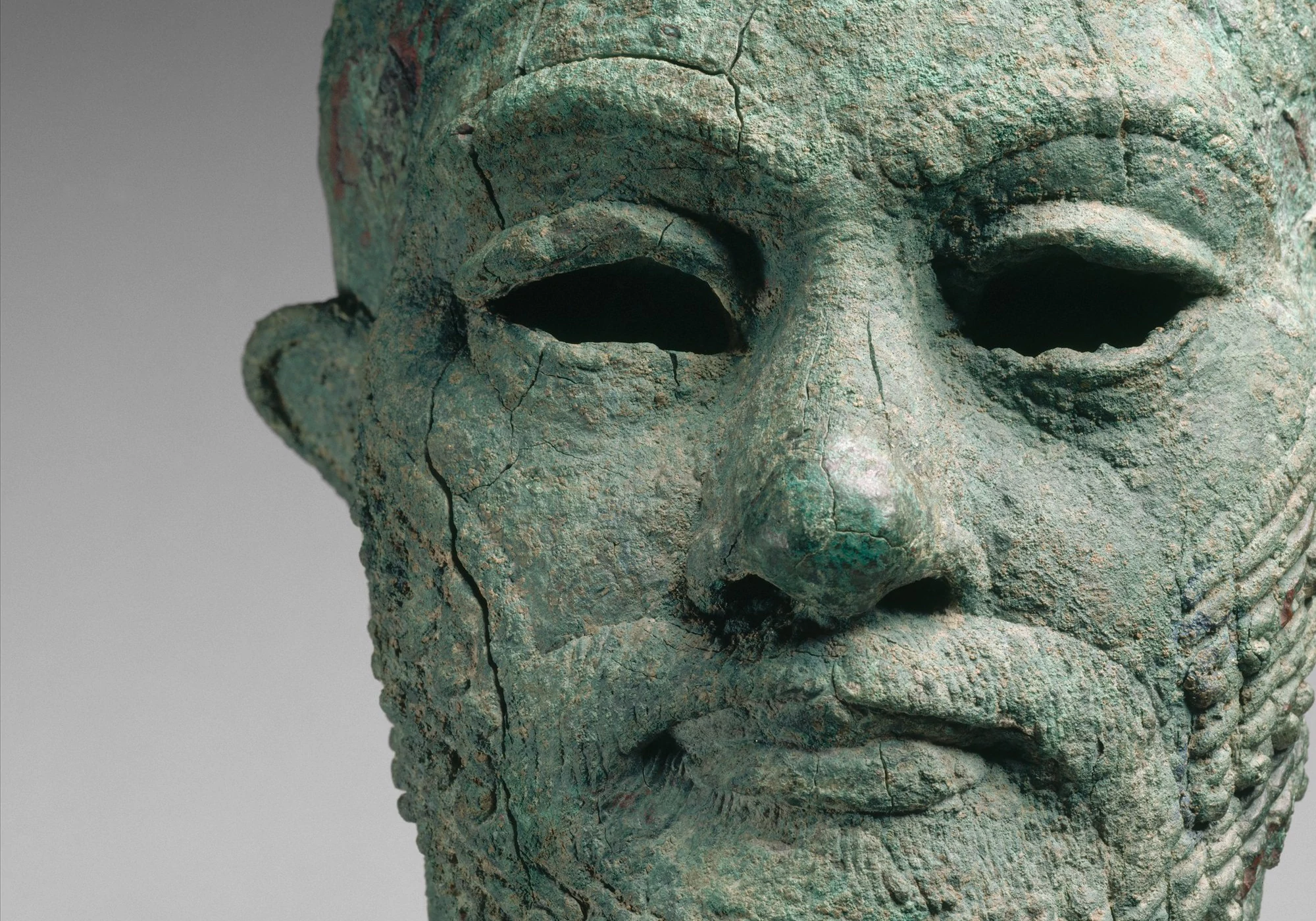
Mesopotamia
Poetry, war, and the invention of law
3500 – 1000BCELagash and Umma were two Sumerian cities located 18 miles apart. These documents were found on clay cylinders and date from about 2500 BC. At the time of the events recorded here, Entemena is king of Lagash. His uncle, Eannatum, had been king earlier and was responsible for the treaty with Lagash mentioned in these documents.
I
By the immutable word of Enlil, king of the lands, father of the gods, Ningirsu and Shara set a boundary to their lands. Mesilim, King of Kish, at the command of his deity Kadi, set up a stele [a boundary marker] in the plantation of that field.
Ush, ruler of Umma, formed a plan to seize it. That stele he broke in pieces, into the plain of Lagash he advanced. Ningirsu, the hero of Enlil, by his just command, made war upon Umma. At the command of Enlil, his great net ensnared them. He erected their burial mound on the plain in that place.
II
Eannatum, ruler of Lagash, brother of the father of Entemena [who put up this inscription] ... for Enakalli, ruler of Umma, set the border to the land. He carried a canal from the great river to Guedin . He opened the field of Ningirsu on its border for 210 spans to the power of Umma. He ordered the royal field not to be seized. At the canal he inscribed a stele. He returned the stele of Mesilim to its place. He did not encroach on the plain of Mesilim. At the boundary-line of Ningirsu, as a protecting structure, he built the sanctuary of Enlil, the sanctuary of Ninkhursag .... By harvesting, the men of Umma had eaten one storehouse-full of the grain of Nina [goddess of Oracles], the grain of Ningirsu; he caused them to bear a penalty. They brought 144,000 gur,, a great storehouse full, [as repayment]. The taking of this grain was not to be repeated in the future.
Urlumma, ruler of Umma drained the boundary canal of Ningirsu, the boundary canal of Nina; those steles he threw into the fire, he broke [them] in pieces; he destroyed the sanctuaries, the dwellings of the gods, the protecting shrines, the buildings that had been made. He was as puffed up as the mountains; he crossed over the boundary canal of Ningirsu. Enannatum, ruler of Lagash, went into battle in the field of Ugigga, the irrigated field of Ningirsu. Entemena, the beloved son of Enannatum, completely overthrew him. Urlumma fled. In the midst of Umma he killed him. He left behind 60 soldiers of his force [dead] on the bank of the canal “Meadow- recognized-as-holy-from-the-great-dagger.” He left these men-their bones on the plain. He heaped up mounds for them in 5 places. Then Ili Priest of Ininni of Esh in Girsu, he established as a vassal ruler over Umma.
III
Ili, took the ruler of Umma into his hand. He drained the boundary canal of Ningirsu, a great protecting structure of Ningirsu, unto the bank of the Tigris above from the banks of Girsu. He took the grain of Lagash, a storehouse of 3600 gur . Entemena, ruler of Lagash declared hostilities on Ili, whom for a vassal he had set up. Ili, ruler of Umma, wickedly flooded the dyked and irrigated field; he commanded that the boundary canal of Ningirsu; the boundary canal of Nina be ruined.... Enlil and Ninkhursag did not permit [this to happen]. Entemena, ruler of Lagash, whose name was spoken by Ningirsu, restored their canal to its place according to the righteous word of Enlil, according to the righteous word of Nina, their canal which he had constructed from the river Tigris to the great river, the protecting structure, its foundation he had made of stone ...
[Based on: George A. Barton, “Inscription of Entemena #7” in: The Royal Inscriptions of Sumer and Akkad (New Haven, CT; Yale Univ., 1929) pp. 61, 63 and 65. Copyright 1998 David W. Koeller.]